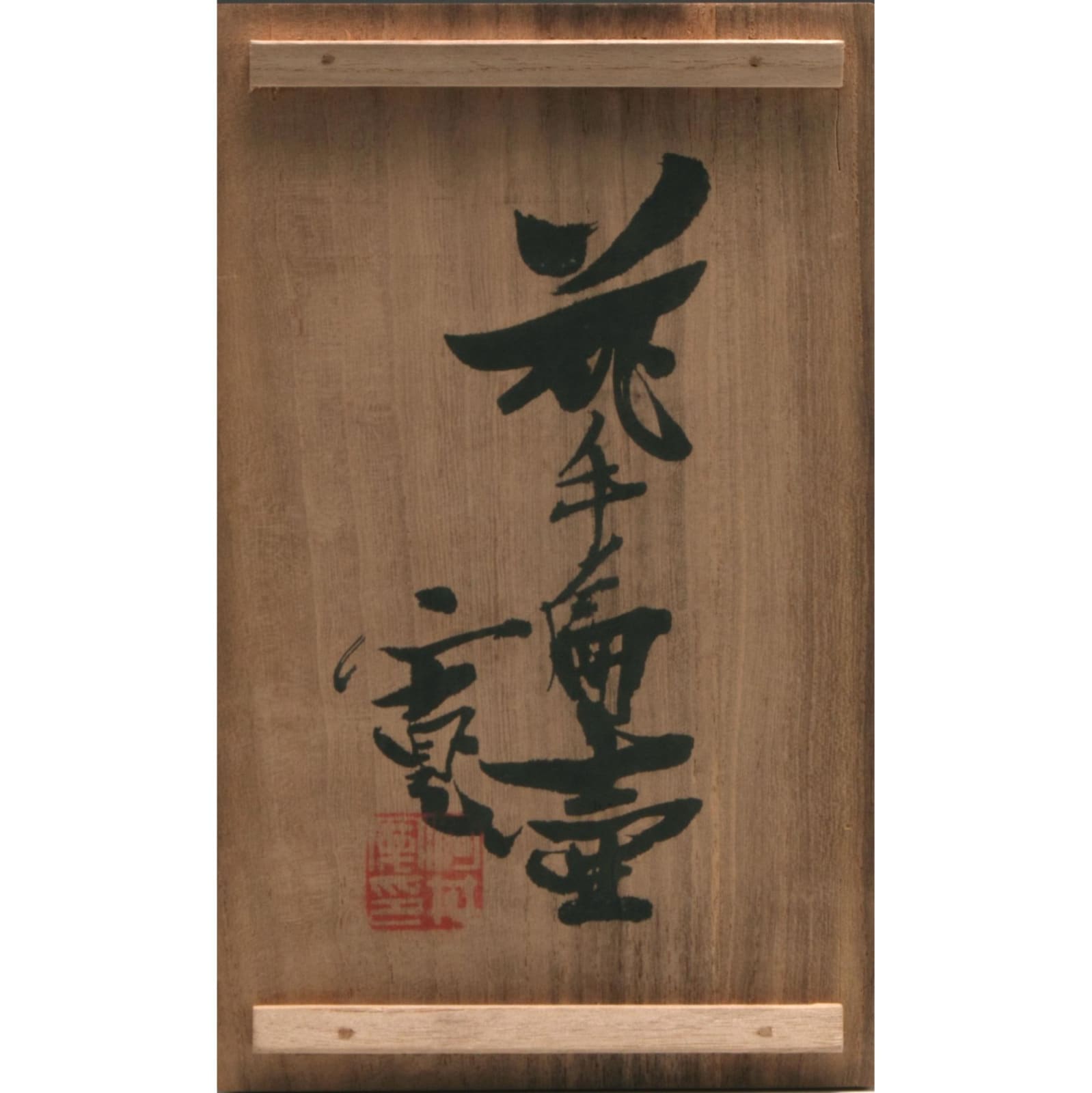Kawai Kanjirō (1890–1966)
Jar with Design of Hand and Flower
With a box signed by the artist
12.3 x 21.1 x H25.4 cm
12.3 x 21.1 x H25.4 cm
Further images
Kawai Kanjiro titled this piece on the box: “Hanate henko” (jar with flower and hand pattern). The term “henko,” literarily flat jar, usually refers to jars of round and flat form. Kanjiro, however, seems to regard all jars other than round ones, including angular ones and object-like pieces, as henko. Each part of this jar, from mouth to foot, such as the nearly horizontal shoulders, and the gentle curves that form its plump waist, suggests that it was created on a square, rather than round, basis.
On the flat body of this jar, Kanjiro applied the tsutsugaki technique, literally “cone painting,” a technique similar to slip trailing, to outline the design of flower and hand. In between the raised (white) outlines, iron, copper red, and green glazes are applied to represent a hand pose that is reminiscent of the nengemisho (holding a flower and subtly smiling) on one side, and a hand holding a sacred gem on the other. The hand became a frequent motif for Kanjiro from around 1950. As a craftsman whose works are all rooted in his hands, Kanjiro not only produced ceramic pieces, but also wooden carvings and calligraphy that are hand-motifed.
Displaying Kanjiro’s representative features in terms of its form, technique and motif, this work reflects Kanjiro’s mastery and soul of ceramic making. It is undoubtedly a great piece at his artistic accomplishment in the postwar time.
Kawai Kanjiro (ceramist; 1890–1966)
Shimane-born ceramist. Graduated from Tokyo Higher Technical School, and apprenticed at the Kyoto Tojiki Shikenjo (Kyoto research institute for ceramics). Constructed a kiln in Gojozaka in Kyoto, and started producing ceramics of his own technique and style under the inspiration of ancient Chinese and Korean ceramics. Led the Mingei movement with Yanagi Muneyoshi. Brought new wind to the modern ceramics with his solid and austere style, which sought for yonobi (functional beauty). Received the Grand Prize at Milan Triennale.
On the flat body of this jar, Kanjiro applied the tsutsugaki technique, literally “cone painting,” a technique similar to slip trailing, to outline the design of flower and hand. In between the raised (white) outlines, iron, copper red, and green glazes are applied to represent a hand pose that is reminiscent of the nengemisho (holding a flower and subtly smiling) on one side, and a hand holding a sacred gem on the other. The hand became a frequent motif for Kanjiro from around 1950. As a craftsman whose works are all rooted in his hands, Kanjiro not only produced ceramic pieces, but also wooden carvings and calligraphy that are hand-motifed.
Displaying Kanjiro’s representative features in terms of its form, technique and motif, this work reflects Kanjiro’s mastery and soul of ceramic making. It is undoubtedly a great piece at his artistic accomplishment in the postwar time.
Kawai Kanjiro (ceramist; 1890–1966)
Shimane-born ceramist. Graduated from Tokyo Higher Technical School, and apprenticed at the Kyoto Tojiki Shikenjo (Kyoto research institute for ceramics). Constructed a kiln in Gojozaka in Kyoto, and started producing ceramics of his own technique and style under the inspiration of ancient Chinese and Korean ceramics. Led the Mingei movement with Yanagi Muneyoshi. Brought new wind to the modern ceramics with his solid and austere style, which sought for yonobi (functional beauty). Received the Grand Prize at Milan Triennale.





